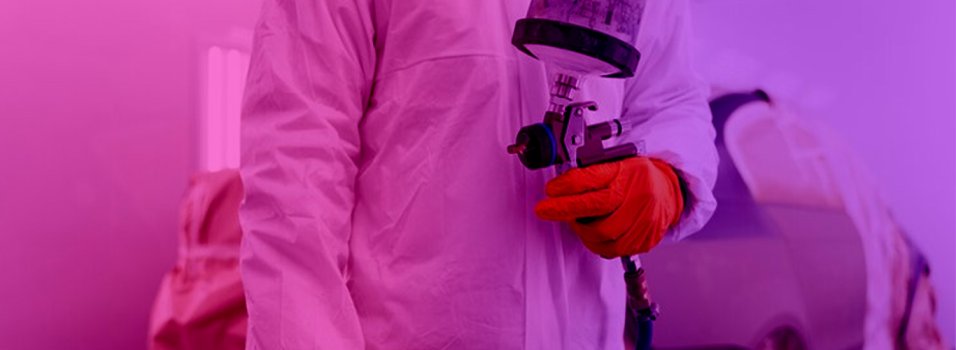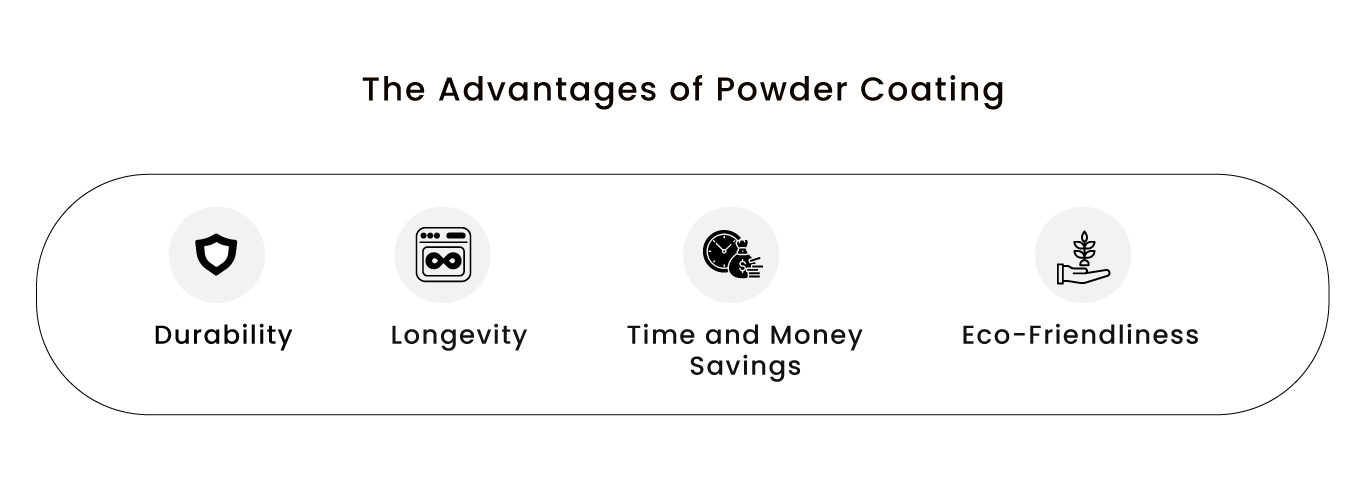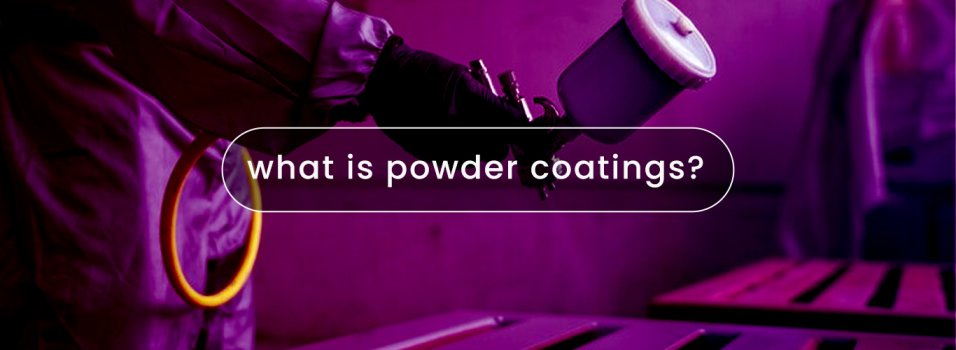Introduction
The architectural industry represents a significant growth opportunity for the powder coatings market, driven by an increasing demand for innovative finishes and sustainable building practices. The architectural industry is on the brink of a significant transformation, driven by changing consumer preferences, technological innovations, and an increasing focus on sustainability. Within this dynamic landscape, powder coatings have emerged as a crucial enabler, offering a versatile solution to meet the demand for innovative finishes, durability, and environmental responsibility. Powder coatings have emerged as a key enabler of these requirements, offering a versatile and eco-friendly alternative to traditional liquid coatings.
This white paper explores the factors contributing to this trend, including the rising popularity of matte and premium-textured finishes, and the growing emphasis on sustainability in residential and commercial construction. The insights provided aim to guide powder coatings market players in leveraging these trends to capitalize on the lucrative opportunities within the architectural sector.

The architectural coatings market is expected to witness market growth at a rate of 5.25% in the forecast period of 2021 to 2028. Data Bridge Market Research report on architectural coatings market provides analysis and insights regarding the various factors expected to be prevalent throughout the forecast period while providing their impacts on the market’s growth. The increase in demand for the product for various industrial applications is escalating the growth of architectural coatings market.
To know more about the study, visit: https://www.databridgemarketresearch.com/reports/global-architectural-coatings-market
The Role of Powder Coatings
Powder coatings are dry finishing processes that have gained widespread popularity due to their durability, high-quality finish, and environmental benefits. Unlike traditional liquid paints, powder coatings do not require solvents and emit negligible volatile organic compounds (VOCs), making them an environmentally friendly option. The process involves applying a dry powder, which is then cured under heat to form a hard, durable coating.
The architectural industry, encompassing residential, commercial, and industrial construction, is a major consumer of coating materials. With evolving design trends and increasing awareness of sustainability, the sector is continuously seeking innovative solutions to enhance aesthetic appeal and environmental performance.
In the architecture industry, both buildings and architectural components demand sturdy bases, exceptional longevity, resistance against corrosion and environmental elements, and an appealing aesthetic. Powder coatings offer a more eco-friendly option compared to alternative surface finishes while also delivering heightened durability for architectural uses. Powder coatings have emerged as a preferred choice for architectural applications, owing to their numerous advantages over traditional liquid coatings. These advantages include:
Powder coatings offer exceptional durability, resisting chipping, scratching, and fading even in harsh environmental conditions. This durability ensures that architectural structures maintain their aesthetic appeal over an extended lifespan, reducing the need for frequent maintenance and refurbishment.
Within architectural contexts, powder coating finds extensive utility in fortifying metal elements such as door frames, railings, and window frames. While these materials boast inherent strength and durability, the application of a robust powder coating amplifies their resilience and furnishes an additional layer of safeguarding. Notably, powder coating exhibits heightened resistance against scratching, fading, erosion, and various forms of damage, preserving the aesthetic integrity of homes or structures.
In commercial architectural settings, where the public frequently interacts with surfaces, the durability of powder coating becomes particularly paramount. This encompasses areas such as handrails, fencing, door frames, railing, crash bars, storefronts, commercial windows, and other high-traffic zones within public edifices.
Powder coatings provide architects and designers with unparalleled flexibility in achieving a wide range of finishes, including matte and premium-textured surfaces. Whether replicating the natural look of wood or creating contemporary metallic effects, powder coatings empower creativity and innovation in architectural design.
Powder coating offers a diverse array of colors and customizable choices, a crucial feature for the architecture sector. These coatings are created by blending resins, pigments, and other additives, then grinding them into a fine powder, available in a multitude of hues.
Moreover, architectural powder coatings can incorporate mica powders to achieve a metallic appearance, a sought-after option for numerous architects. The flexibility extends to custom colors and small-scale batches, offering a plethora of distinctive color possibilities.
- Environmental Sustainability
Unlike solvent-based liquid coatings, powder coatings contain no volatile organic compounds (VOCs), making them an environmentally friendly choice for architectural applications. With sustainability becoming a core consideration in construction projects, the eco-friendly profile of powder coatings aligns seamlessly with the industry's evolving priorities.
The powder coatings market is expected to witness market growth at a rate of 5.61% in the forecast period of 2022 to 2029. Data Bridge Market Research report on powder coatings market provides analysis and insights regarding the various factors expected to be prevalent throughout the forecast period while providing their impacts on the market’s growth. The rise in the number of consumer goods companies is escalating the growth of powder coatings market.
To know more about the study, visit: https://www.databridgemarketresearch.com/reports/global-powder-coatings-market
Sustainability has become a core consideration in architectural design and construction. Powder coatings contribute to sustainable building practices through their low VOC emissions, high material utilization rates, and recyclability. Additionally, advancements in powder coating technologies have led to the development of formulations with enhanced durability and resistance to environmental degradation, further extending the lifespan of coated structures.
The environmental benefits and manufacturing adaptability of powder coating are poised to significantly influence its utilization in the coming years, particularly as a complement to conventional liquid coatings prevalent in most building materials. With both these alternatives at their disposal, architects have virtually limitless design and technological avenues to explore.

The process of applying and curing powder coating results in a more robust finish compared to conventional wet paint. Unlike wet paint, powder coating provides a consistent coverage and vibrant coloration since it does not drip during application, avoiding any potential blemishes or weak areas. The enhanced strength and durability of powder coating ensure prolonged protection on the surface as compared to traditional wet paint. With minimal to no chipping, the surface will require less frequent painting.
Current Landscape and Market Trends
The architectural industry has witnessed a paradigm shift in recent years, with consumers increasingly prioritizing aesthetics, performance, and sustainability in building design and construction. This shift is underscored by a growing preference for matte and premium-textured finishes, which offer a sophisticated appeal and enhance the visual impact of architectural structures.
Moreover, there is a palpable momentum towards sustainability, driven by environmental concerns and regulatory imperatives. As stakeholders seek to reduce their carbon footprint and adopt eco-friendly practices, the demand for sustainable building materials, including powder coatings, has surged.
Architects enjoy a broad spectrum of choices when selecting coatings capable of withstanding the most challenging environments. Powder coatings are emerging as a leading choice, owing to heightened sustainability and aesthetic allure, empowering designers to craft projects that endure and make a lasting impact. Following are the trends friving the demand for powder coatings in agricultural industry:
- Preference for Matte Finishes: Matte finishes have gained traction in architectural design, reflecting a shift towards understated elegance and modern aesthetics. Powder coatings excel in delivering consistent matte surfaces, enhancing the visual appeal of buildings and structures
- Rise of Premium-Textured Finishes: Architects and designers are increasingly exploring textured finishes to add depth and character to surfaces. Powder coatings offer a diverse range of textures, from fine to coarse, enabling unparalleled design flexibility and creativity
- Emphasis on Sustainability: With growing concerns over environmental degradation and carbon footprint, sustainability has become a central theme in architectural practices. Powder coatings, free from volatile organic compounds (VOCs) and hazardous air pollutants (HAPs), align with green building standards and contribute to eco-conscious construction
- Advancements in Application Technology: Technological advancements have enhanced the application efficiency and durability of powder coatings, making them a preferred choice for architectural projects. Automated application systems ensure precision and consistency, reducing material wastage and labor costs

Key Market Players and Innovations
Several market players are driving innovation and shaping the landscape of powder coatings in the architectural industry. Innovations in technology can disrupt traditional architectural powder coating markets, create new opportunities, and change consumer behavior. Keeping pace with technological advancements is crucial for companies to remain competitive. Some of the notable developments in architectural coatings market include:
- AkzoNobel's Low-Temperature Cured Architectural Powder Coating: In November 2023, AkzoNobel introduced a groundbreaking low-temperature cured powder coating, offering enhanced energy efficiency and sustainability benefits for architectural applications. This innovation underscores the industry's commitment to reducing energy consumption and carbon emissions throughout the coating process.
Additionally, it can cure up to 25% faster than traditional powders, enabling more efficient coating of products within a shorter timeframe. The product's sustainability is supported by an Environmental Product Declaration (EPD), an independently verified evaluation of its environmental footprint throughout its entire lifecycle.
- PPG's Envirocron PCS P4 Powder Coatings: In November 2021, PPG launched Envirocron PCS P4 powder coatings specifically designed for the architectural market, delivering superior performance and aesthetics while meeting stringent environmental standards. These coatings exemplify PPG's dedication to sustainability and technological excellence in serving the evolving needs of architects and builders
- Tiger Drylac's Super Durable Polyester Colors: In August 2021, Tiger Drylac introduced six new super-durable polyester colors, expanding the palette of options available to architects and designers seeking premium finishes with exceptional longevity. These colors combine aesthetic appeal with robust performance, meeting the demands of diverse architectural applications

Challenges and Opportunities
Despite their numerous benefits, powder coatings face certain challenges in the architectural industry, including initial cost barriers, limited color options, and complex application requirements for intricate surfaces. However, these challenges present opportunities for innovation and market expansion. Collaborative research and development efforts can lead to breakthroughs in color customization, application versatility, and sustainability certifications, further fueling the growth of the powder coatings market.
Recent Developments in Powder Coating Technology
Manufacturers are continuously working on developing powder coating formulations that offer improved durability, weather resistance, and color retention. These advancements aim to meet the stringent requirements of architectural applications, such as building facades and exterior elements.
Powder coatings are inherently low in VOCs, aligning with stringent environmental regulations and green building standards. Manufacturers are continually improving formulations to further reduce emissions and enhance the sustainability profile of their products. These efforts are crucial for gaining certification under programs such as LEED (Leadership in Energy and Environmental Design) and BREEAM (Building Research Establishment Environmental Assessment Method).
Moreover, digitalization and automation are transforming various industries, including manufacturing. In the powder coating industry, advancements in automation technologies can streamline production processes, improve efficiency, and enhance quality control. Automated systems for powder application and curing can help reduce manual labor and minimize errors, leading to higher productivity and consistency.
- Nanotechnology Integration
A notable progression in powder coatings involves the integration of nanotechnology. Nanoparticles, typically composed of materials such as silica or zinc oxide, augment the coating's attributes, including hardness, scratch resistance, and UV stability. Moreover, nanotechnology facilitates the creation of self-healing coatings, enabling the repair of minor damages over time, thus prolonging the lifespan of the final product.
Below are some developments in architectural coatings industry:
- In 2022, Tang's group developed a series of fire-retardant coating materials based on silicone resin polymer foam composites
Nanotechnology holds promise for the development of high-performance coatings with exceptional properties, such as enhanced scratch resistance, improved adhesion, and better UV protection. Research in this field could lead to the commercialization of nano-enhanced powder coatings tailored for architectural applications.
Powder coatings have transcended their role as mere aesthetic enhancers. Recent advancements have led to the development of functional coatings with tailored properties for specific applications. Anti-microbial powder coatings are gaining momentum in healthcare environments, where maintaining sterility is paramount. These coatings impede the growth of bacteria and other microorganisms on treated surfaces.
- In December 2021, Adapta Color S.L., a Spanish powder manufacturer, created a photocatalytic powder coating capable of absorbing harmful environmental nitrous oxides and transforming them into benign nitrates under UV light exposure. Additionally, they have developed a powder coating with insect-repelling properties, particularly effective against disease-carrying mosquitoes. Laboratory trials have validated a 62% decrease in Adedes aegypti mosquito populations, responsible for transmitting diseases like dengue, Zika, and yellow fever in tropical regions.
Smart Coatings for Enhanced Performance
The integration of smart coatings into powder formulations represents a groundbreaking leap. These coatings can react to external stimuli, such as temperature fluctuations or light exposure, offering adaptive functionalities. Smart coatings find utility across diverse industries, including automotive, where they contribute to enhanced fuel efficiency and reduced maintenance expenses.
The integration of intelligent coatings into powder formulations marks a significant advancement. These coatings have the ability to react to external triggers like shifts in temperature or exposure to light, offering adaptive functionalities.
- In 2020, Purdue University engineers created a white paint using calcium carbonate, capable of cooling surfaces by up to 18°F (-10°C) compared to the ambient temperature, all without requiring energy consumption.
- Hyper-durable powder coatings are gaining traction in the market. Prominent skyscraper projects have adopted fluoropolymer-based powders to ensure exceptional UV durability. Notable examples include 55 Hudson Yards in Manhattan, the Stratus Building (9th & Lenora) in Seattle, and PNC Plaza in Pittsburgh. These powder coatings utilize a special fluoroethylene vinyl-ether resin and are cured with an aliphatic urethane crosslinker. This technology surpasses the stringent standards set by AAMA 2605 and Qualicoat Class 3 specifications, demonstrating resilience against prolonged UV and environmental exposure for a decade or more.
With the rise of smart buildings and IoT (Internet of Things) technology, there is a potential for the development of smart coatings that offer additional functionalities beyond protection and aesthetics. These coatings could incorporate features such as self-cleaning properties, anti-microbial surfaces, or even energy-efficient properties to contribute to the overall performance of buildings.
Conclusion
As the architectural industry embraces the principles of sustainability, innovation, and design excellence, powder coatings are poised to play an increasingly pivotal role in shaping the built environment of the future. With their inherent durability, versatility, and environmental benefits, powder coatings offer a compelling solution for architects, builders, and developers seeking to create iconic structures that stand the test of time. The architectural industry offers a promising avenue for growth for powder coatings market players. By aligning product offerings with the evolving demands for matte and premium-textured finishes and the broader push towards sustainability, manufacturers can tap into a lucrative and expanding market. Strategic investments in technology, marketing, and collaboration will be key to unlocking the full potential of this opportunity.
Metallic powder coatings market will reach an estimated valuation of USD 6,242.17 million by 2028, while registering this growth at a rate of 7.50% for the forecast period of 2021 to 2028. Data Bridge Market Research report on metallic powder coatings market provides analysis and insights regarding the various factors expected to be prevalent throughout the forecasted period while providing their impacts on the market’s growth.
To know more about the study, visit: https://www.databridgemarketresearch.com/reports/global-metallic-powder-coatings-market



